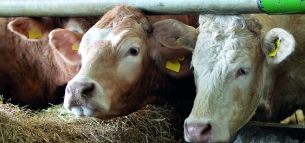Beef & Lamb Standards
Download Beef & Lamb Standards Manual
Download the changes to Beef & Lamb Standards from 1 February 2025
LIVESTOCK TRANSPORT Version 5.0 (modified)
Click to view
Key – Those standards which have greater significance (all other standards are normal)
Recommendation – Those which do not affect certification
New – A completely new standard which the member must now adhere to
Revised – A standard that has changed and requires the member to take some different or additional action to before
Upgraded – The standard has been upgraded to a Key standard or from a Recommendation to a full standard
Appendix – Referenced in ‘How you will be measured’. Indicates that additional information is provided in the Appendices, which are available at the end of each section.
L.LT.1 Key
Vehicles used maintain the health and welfare of livestock being transported.
How you will be measured
L.LT.1.a
L.LT.1.b
L.LT.1.c
L.LT.1.d
L.LT.1.e
L.LT.1.f
L.LT.1.g
L.LT.1.h
L.LT.1.i
L.LT.1.j
L.LT.1.k
L.LT.1.m
L.LT.2
Where bedding is used it must be clean, safe and suitable.
How you will be measured
L.LT.2.a
L.LT.3
Legally required stocking densities must be followed in order to minimise stress and risk of injury.
How you will be measured
L.LT.3.a
L.LT.3.b
L.LT.3.d
L.LT.4 Key
Livestock transported off the farm must be fit for the intended journey
How you will be measured
L.LT.4.a
L.LT.4.b
L.LT.4.c
L.LT.5
Livestock transported by a trained and competent person
How you will be measured
L.LT.5.a
L.LT.5.b
Species Specific Certificate of Competence
L.LT.6
Emergency plans and facilities must be in place
How you will be measured
L.LT.6.a
L.LT.6.b
Contingency plan
L.LT.7
A valid transporter authorisation is held for the journeys undertaken
- a short journey (Type 1) authorisation for journeys over 65km and up to 8 hours
- a long journey (Type 2) authorisation for journeys over 8 hours
Transporter authorisation
L.LT.8
Vehicles and trailers used for journeys in excess of 8 hours must be approved by the relevant competent authority
Vehicle approval certificate
L.LT.9 Key
Vehicles must be cleaned and disinfected using DEFRA approved disinfectants
How you will be measured
L.LT.9.a
- Government guidance on animal welfare during transport: https://www.gov.uk/guidance/animal-welfare#animal-welfare-during-transport
- DEFRA approved disinfectants: https://www.gov.uk/guidance/defra-approved-disinfectant-when-and-how-to-use-it
- DAERA approved disinfectants: https://www.daera-ni.gov.uk/publications/approved-disinfectants
More Standards
Download Beef & Lamb Standards Manual
Download the changes to Beef & Lamb Standards from 1 February 2025
- LT.4.b – It is permitted for a farmer or a haulier if appointed to transport heavily pregnant females (past 90% gestation) short distances under 50km e.g. between or within farm premises if the journey is for the purposes of improving conditions of birth.
- LT.4 – Animals that are slightly ill or injured may only be transported under very limited circumstances including transport within keepership, only if it does not cause any unnecessary suffering.
